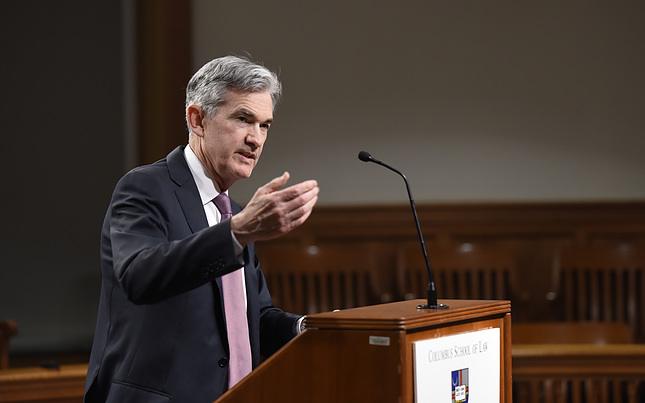Most recent article: Mexican Peso on the defensive ahead of the Fed’s decision
- Mexican Peso is at risk of extending its losses past the 100-day SMA.
- Mexico’s Industrial Production crushed the forecast, ahead of Banxico’s decision on Thursday.
- The Fed is expected to hold rates unchanged, but uncertainty looms about Powell’s speech.
Mexican Peso (MXN) stages a comeback climb against the US Dollar (USD) following an inflation report in the United States (US), which most likely would prevent the US Federal Reserve (Fed) from easing monetary policy faster than the expectations of market participants. Late in the North American session, the USD/MXN is trading at 17.30, losing 0.39% after reaching a daily high of 17.43.
Mexico’s economic docket showed that Industrial Production remains at a stronger pace, contradicting Bank of Mexico’s (Banxico) officials' intentions of easing monetary policy in the first quarter of 2024. On Thursday, Banxico is expected to keep rates unchanged at 11.25% and deliver a neutral stance statement.
Across the border, the US Bureau of Labor Statistics (BLS) announced that the disinflation process continued as traders brace for the Fed’s decision on Wednesday. The US central bank is expected to keep rates unchanged but to push back against aggressive traders betting the Fed would ease policy by 100 basis points next year.
Daily digest movers: Mexican Peso counterattacks as the USD/MXN slides further below 100-day SMA
- Industrial Production in Mexico was 5.5% in the twelve months ending in October, above September’s 3.9%. Monthly figures advanced 0.6% vs. 0.2% in the previous month.
- Mexico’s inflation data was mixed, though the disinflation process continued, as Banxico had estimated. Two officials, Governor Victoria Rodriguez Ceja and Deputy Governor Jonathan Heath, expressed that rate-cut discussions could begin in the first quarter of 2024.
- The US Consumer Price Index (CPI) for November was aligned with estimates of 3.1% YoY, lower than October’s 3.2%, with monthly readings rising 0.1%, above forecasts of 0%.
- The CPI excluding food and energy, the so-called core, stood pat at 4%, and month-over-month, at 0.3%, which aligned with forecasts, and was a tick higher than October’s 0.2%.
- Now that inflation data is out of the way and given the strengthening revealed in the US labor market by recent data, expectations of the Fed’s interest rate expectations for the next year remain volatile. Data from the Chicago Board of Trade (CBOT) has traders expecting 100 bps of rate cuts.
- On Wednesday, USD/MXN traders will scrutinize the Fed’s statement, its Summary of Economic Projections (SEP), and Chair Jerome Powell's speech. Powell is expected to push back against market speculation of monetary policy easing for next year.
- The US Dollar Index (DXY) pared some of its losses, with the DXY down 0.07% at 104.01.
Technical analysis: Mexican Peso gathers momentum prints a two-day high around 17.29
The USD/MXN daily chart portrays the pair as neutral to upward biased, with buyers battling at the 100-day Simple Moving Average (SMA), seen as a resistance level at 17.40. If they want to regain control, a breach of the latter is needed, followed by the 17.50 mark. Upside risks will surface at the 200-day SMA at 17.54, followed by the 50-day SMA at 17.65
On the other hand, failure to reclaim the 100-day SMA, could see sellers pile in and drag prices toward the 17.20 area, ahead of a strong demand region at around the 17.00/05 range. Once hurdled, the USD/MXN could test the year-to-date (YTD) low of 16.62.
Fed FAQs
What does the Federal Reserve do, how does it impact the US Dollar?
Monetary policy in the US is shaped by the Federal Reserve (Fed). The Fed has two mandates: to achieve price stability and foster full employment. Its primary tool to achieve these goals is by adjusting interest rates.
When prices are rising too quickly and inflation is above the Fed’s 2% target, it raises interest rates, increasing borrowing costs throughout the economy. This results in a stronger US Dollar (USD) as it makes the US a more attractive place for international investors to park their money.
When inflation falls below 2% or the Unemployment Rate is too high, the Fed may lower interest rates to encourage borrowing, which weighs on the Greenback.
How often does the Fed hold monetary policy meetings?
The Federal Reserve (Fed) holds eight policy meetings a year, where the Federal Open Market Committee (FOMC) assesses economic conditions and makes monetary policy decisions.
The FOMC is attended by twelve Fed officials – the seven members of the Board of Governors, the president of the Federal Reserve Bank of New York, and four of the remaining eleven regional Reserve Bank presidents, who serve one-year terms on a rotating basis.
What is Quantitative Easing (QE) and how does it impact USD?
In extreme situations, the Federal Reserve may resort to a policy named Quantitative Easing (QE). QE is the process by which the Fed substantially increases the flow of credit in a stuck financial system.
It is a non-standard policy measure used during crises or when inflation is extremely low. It was the Fed’s weapon of choice during the Great Financial Crisis in 2008. It involves the Fed printing more Dollars and using them to buy high grade bonds from financial institutions. QE usually weakens the US Dollar.
What is Quantitative Tightening (QT) and how does it impact the US Dollar?
Quantitative tightening (QT) is the reverse process of QE, whereby the Federal Reserve stops buying bonds from financial institutions and does not reinvest the principal from the bonds it holds maturing, to purchase new bonds. It is usually positive for the value of the US Dollar.
Information on these pages contains forward-looking statements that involve risks and uncertainties. Markets and instruments profiled on this page are for informational purposes only and should not in any way come across as a recommendation to buy or sell in these assets. You should do your own thorough research before making any investment decisions. FXStreet does not in any way guarantee that this information is free from mistakes, errors, or material misstatements. It also does not guarantee that this information is of a timely nature. Investing in Open Markets involves a great deal of risk, including the loss of all or a portion of your investment, as well as emotional distress. All risks, losses and costs associated with investing, including total loss of principal, are your responsibility. The views and opinions expressed in this article are those of the authors and do not necessarily reflect the official policy or position of FXStreet nor its advertisers. The author will not be held responsible for information that is found at the end of links posted on this page.
If not otherwise explicitly mentioned in the body of the article, at the time of writing, the author has no position in any stock mentioned in this article and no business relationship with any company mentioned. The author has not received compensation for writing this article, other than from FXStreet.
FXStreet and the author do not provide personalized recommendations. The author makes no representations as to the accuracy, completeness, or suitability of this information. FXStreet and the author will not be liable for any errors, omissions or any losses, injuries or damages arising from this information and its display or use. Errors and omissions excepted.
The author and FXStreet are not registered investment advisors and nothing in this article is intended to be investment advice.
Recommended content
Editors’ Picks

EUR/USD hovers around 1.0600 with a positive bias as US Dollar faces profit-taking selling
EUR/USD remains steady with a positive bias, hovering around 1.0600 during Tuesday's Asian trading hours. The upbeat sentiment surrounding the pair is likely driven by a softer US Dollar (USD), as profit-taking follows its recent rally.

GBP/USD trades with mild positive bias on softer USD, remains below 1.2700 mark
The GBP/USD pair attracts buyers for the second straight day on Tuesday amid a modest US Dollar (USD) downtick and climbs back closer to the 1.2700 mark during the Asian session. Spot prices, however, lack bullish conviction as investors opt to wait for the Bank of England's (BoE) Monetary Policy Report Hearings before placing aggressive directional bets.

Gold could run into sellers at $2,655 on the road to recovery
Gold price extends the recovery into Asian trading on Tuesday, reversing half the previous week’s decline. The focus remains on the upcoming speeches from US Federal Reserve (Fed) policymakers and geopolitical tensions between Russia and Ukraine.

Bitcoin could see another parabolic run following rising institutional interest
Bitcoin (BTC) began the week positively, rising over 3% above the $91K threshold on Monday. Despite the recent rise, BTC could begin another extended bullish move as top firms are increasing their Bitcoin holdings and potentially adopting it as a reserve asset.

The week ahead: Powell stumps the US stock rally as Bitcoin surges, as we wait Nvidia earnings, UK CPI
The mood music is shifting for the Trump trade. Stocks fell sharply at the end of last week, led by big tech. The S&P 500 was down by more than 2% last week, its weakest performance in 2 months, while the Nasdaq was lower by 3%. The market has now given back half of the post-Trump election win gains.

Best Forex Brokers with Low Spreads
VERIFIED Low spreads are crucial for reducing trading costs. Explore top Forex brokers offering competitive spreads and high leverage. Compare options for EUR/USD, GBP/USD, USD/JPY, and Gold.